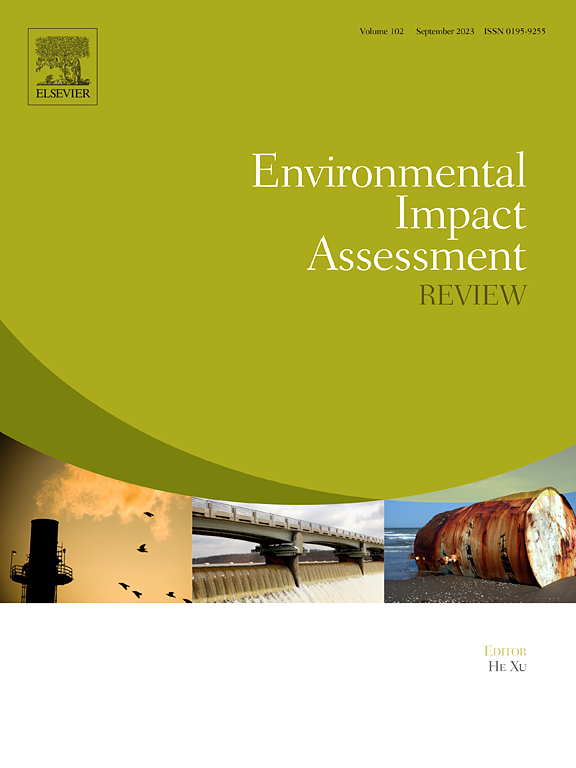Prerequisites for the adoption of nature-based solutions in local communities using the NbS Assessment Tool (NAT): A case study of Lahore, Pakistan
IF 9.8
1区 社会学
Q1 ENVIRONMENTAL STUDIES
引用次数: 0
Abstract
Globally, heatwaves are intensifying due to climate change, particularly in high-density cities like Lahore, Pakistan. Research indicates that global temperatures have increased by 1.1°C since pre-industrial times. Nature-based Solutions (NbS) offer an efficient approach to managing heatwaves, which can help enhance urban green infrastructure development, improve air quality in urban areas, and provide residents with better urban living conditions, ultimately enhancing the well-being of communities. The research presents the NbS Assessment Tool (NAT) as an assessment framework that measures the readiness of local urban communities and assesses the availability of local knowledge, as well as the presence of basic infrastructural amenities in the area, providing a foundation for NbS applications. This framework evaluates five key dimensions: social awareness, economic viability, physical support, readiness to adapt, and institutional support. For this research, Lahore city was divided into three zones: core, urban, and periphery. Each zone was further subdivided into informal and formal communities to better assess the communities and their perceptions. By analyzing these dimensions in relation to selected indicators, this tool determines whether urban communities meet the prerequisites for NbS adoption or not. The framework provides a planned approach for policymakers, urban planners, and local communities to implement effective NbS strategies in urban areas. While this study focuses on Lahore, the assessment tool offers a scalable model that can be applied globally to evaluate the willingness of urban communities to adopt these solutions.
利用国家统计局评估工具(NAT)在当地社区采用基于自然的解决方案的先决条件:以巴基斯坦拉合尔为例
在全球范围内,由于气候变化,热浪正在加剧,特别是在巴基斯坦拉合尔等人口密集的城市。研究表明,自前工业化时代以来,全球气温上升了1.1°C。基于自然的解决方案(NbS)提供了一种有效的热浪管理方法,有助于加强城市绿色基础设施的发展,改善城市地区的空气质量,并为居民提供更好的城市生活条件,最终提高社区福祉。该研究将国家统计局评估工具(NAT)作为一个评估框架,用于衡量当地城市社区的准备情况,评估当地知识的可用性,以及该地区基础设施的存在,为国家统计局的应用提供基础。该框架评估了五个关键方面:社会意识、经济可行性、物质支持、适应准备和机构支持。在本研究中,拉合尔市被划分为三个区域:核心区、市区和外围区。每个区域进一步细分为非正式和正式社区,以更好地评估社区和他们的看法。通过分析这些维度与选定指标的关系,该工具确定城市社区是否满足采用国家统计局的先决条件。该框架为政策制定者、城市规划者和当地社区在城市地区实施有效的国家统计局战略提供了一个有计划的方法。虽然本研究的重点是拉合尔,但评估工具提供了一个可扩展的模型,可在全球范围内应用,以评估城市社区采用这些解决方案的意愿。
本文章由计算机程序翻译,如有差异,请以英文原文为准。
求助全文
约1分钟内获得全文
求助全文
来源期刊

Environmental Impact Assessment Review
ENVIRONMENTAL STUDIES-
CiteScore
12.60
自引率
10.10%
发文量
200
审稿时长
33 days
期刊介绍:
Environmental Impact Assessment Review is an interdisciplinary journal that serves a global audience of practitioners, policymakers, and academics involved in assessing the environmental impact of policies, projects, processes, and products. The journal focuses on innovative theory and practice in environmental impact assessment (EIA). Papers are expected to present innovative ideas, be topical, and coherent. The journal emphasizes concepts, methods, techniques, approaches, and systems related to EIA theory and practice.
 求助内容:
求助内容: 应助结果提醒方式:
应助结果提醒方式:


